The Camaro Kammback Story
by Bob Ackerman. Photos: General Motors
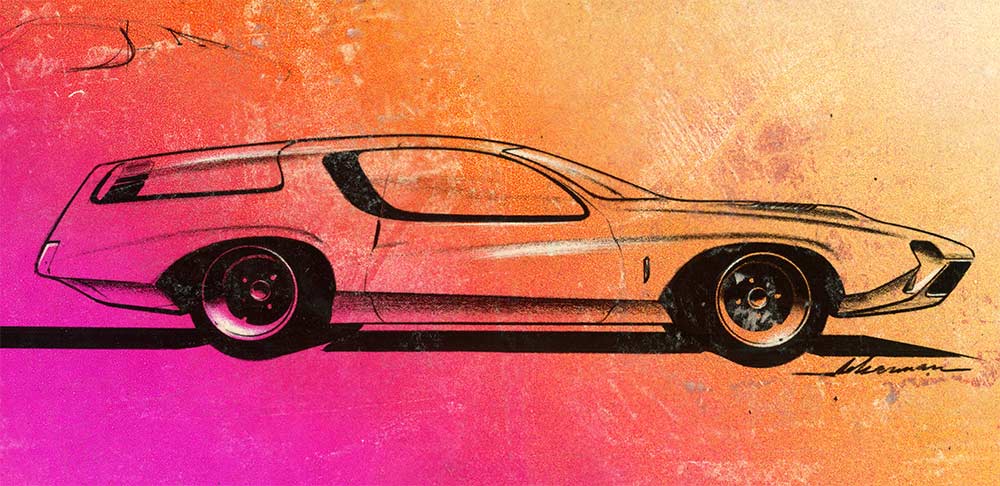
“Hank saw the kammback sketch, and suggested I do a full size tape drawing.”
For many years I had liked the idea of a “shooting brake” model as exemplified by Aston Martin and others. My Art Center portfolio included a Stingray type of sports car with the “shooting brake” profile.
My first assignment after Design Development was in an advanced studio where I first sketched a design with quarter glass rolling into the roof and a kammback profile.
The name Kamm comes from Dr. Wunibald Kamm, a German aerodynamicist whose theory, stated briefly, was that if you can’t continue a form eight degrees from the horizontal to its conclusion as a tear drop shape, it should be abruptly ended. I was not successful in selling this design.
In August of 1967 I was transferred to the Chevy 2 Studio working for Hank Haga. We were doing clean up work on the ’69s at the same time we were establishing the all new 1970 design. Hank saw the Kammback sketch, and suggested I do a full size tape drawing. I remember starting the tape drawing after lunch and asked if I could work overtime on it. After going to the basement cafeteria for a quick sandwich, I started taping. As the tape drawing progressed, I decided to render it. At this point I lost all track of time, and finished it at one-thirty in the morning. The rendering was “Hugger” orange with a bit of red added.
I made sure to be there early the next morning to see what the reaction would be. Hank’s reaction was worth the lack of sleep. His first excited words were all expletives, as he ran to the phone to call Dave Holls, Executive Directer. Dave had the same reaction, and put a call into Bill Mitchell’s office. Bill’s schedule was filled until that afternoon. After viewing the rendering, he ordered that work should start on a full-size clay.
Before becoming a designer I was a technical stylist, so I was very comfortable working with the clay sculptors. As an example, the rear surface of the Kammback was the reverse angle of the coupes under cut so I could use the same tail lamps upside down. Because Firebird was going to share this body style, John Delorean, Pontiac General Manager at that time, wanted to see the clay model. The Kammback clay model happen to have the Camaro RS front that was in the process of being released. The Rally Sport had a body-color urethane grille surround with short bumperettes. To quote Mitchell, “I don’t want that SOB to see that RS (Rally Sport) front!” The plaster shop was called up to the studio and installed a “fake” cast to hide the RS front. The clay model was in front of my full size rendering and I believe that was the reason my rendering was never shot head on. Delorean’s nickname for the Kammback was “the James Bond car.”
Kent Kelly, Styling Aero Department Manager had made some preliminary aerodynamic studies that showed the Kammback might have had a lower drag coefficient [CD] than the coupe. With this aero information, I was about to render another full size with Penske Sunoco blue and Mark Donahue’s number six on the door. If this came about, it would be the first race car to use the Kamm profile since the unrefined 1962 Ferrari 250 GT swb “breadvan” and Peter Brock’s neat 1964 Shelby Daytona Cobra Coupe. This was never going to happen even if the Kammback had made it into production because Roger Penske campaigned an American Motors Javelin for the 1970 Trans Am season. In previous years he won with Camaros.
At this point Chevy 2 Studio became the Kammback studio. The fiberglass model was painted a light gold and Hank ordered a set of Borrani wire wheels for it. We also got ski’s for the roof, and installed them backwards to match the profile of the roof. This Kammback was dramatic as it was only 50.1 inches high, or over three inches lower than a 2018 Camaro. The fiberglass lost its round tail lamps at this point because Bill Mitchell wanted a lower opening so his dogs could jump in easier.
Opening up the whole lift gate required moving the lamps to the quarter panels. I was transferred to the Chevy 1 Studio at this time, so all the subsequent information I got about the program was second hand.
The budget only allowed for one common door and quarter panel. The horizontal character line through the door was over an inch apart. Camaro had a break line and Firebird had a radius or “bone” line. If a compromise about its location could have been resolved there was a possibility of Camaro getting one more strike in the stamping operation of the Firebird’s door panel. This never happened, and the program ended.
Interest remained high, and in 1977 Pontiac Division had a very sharp looking Firebird concept called the K-Back. The K-Back was designed by Jerry Brockstein. Two cars were built by Pininfarina and were on the show circuit for a few years. Bill Mitchell wanted to have a limited production K-Back made in Italy, but again it was not possible because of very high production costs.
I worked in Chevy 1 Studio for ten months contributing to the design of the 1971 Caprice Classic. In August of 1969, I left GM, and went to Chrysler.
I would like to give a special thanks to Christo Datini and John Kyros at the GM Heritage Center for most of the photos in this story. Also to my son Dean for re-imagining some of the photos.



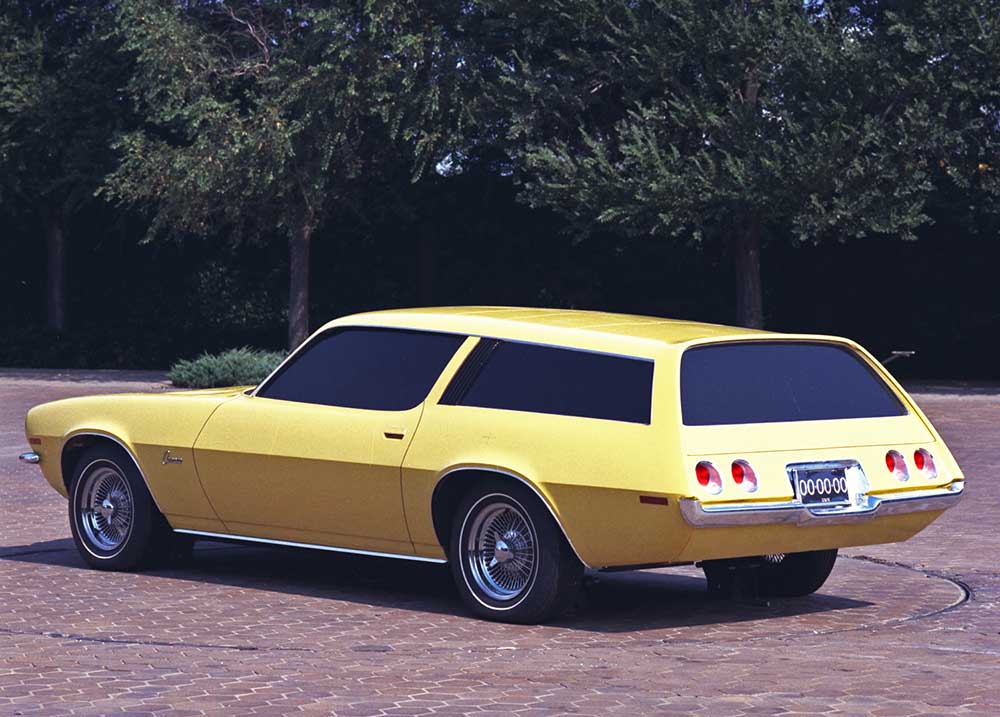
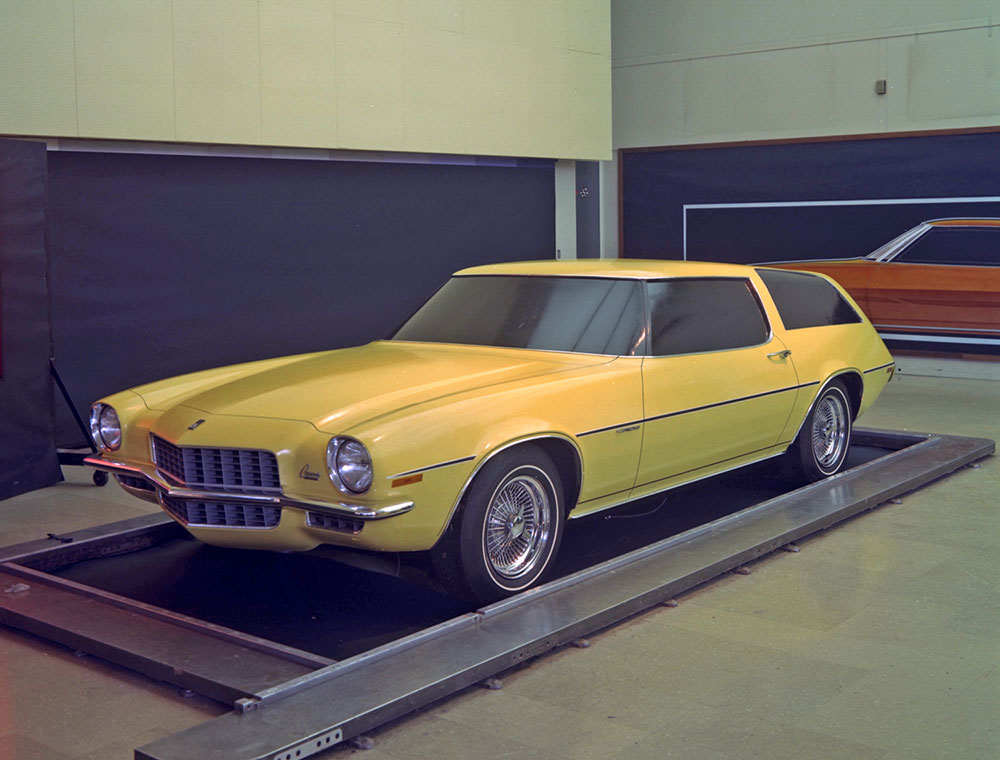
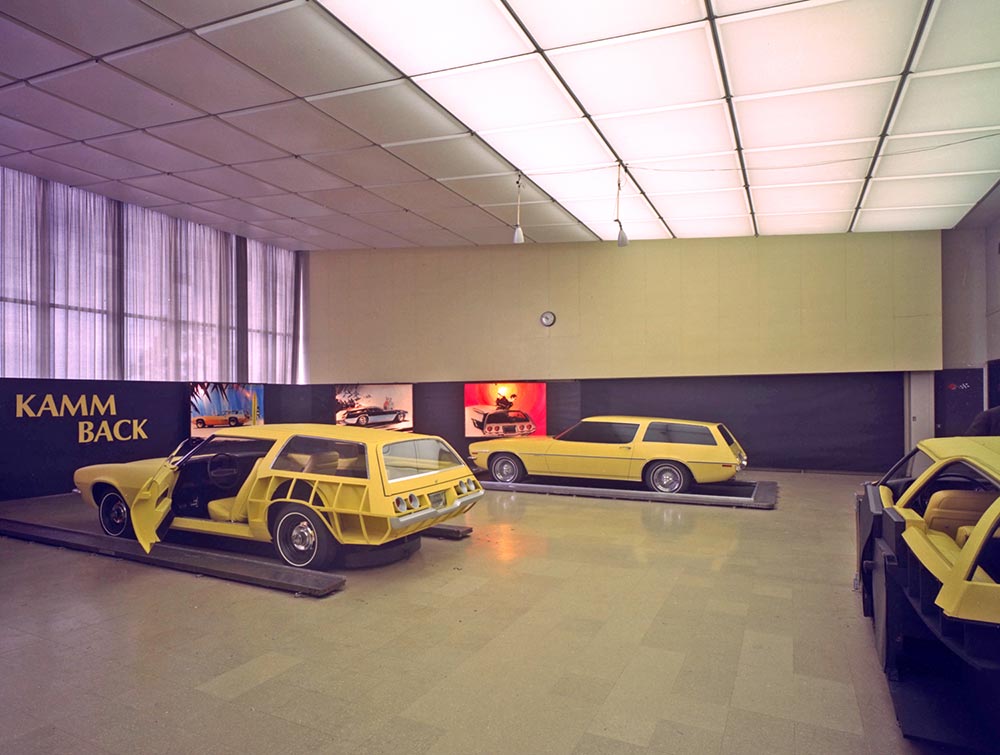
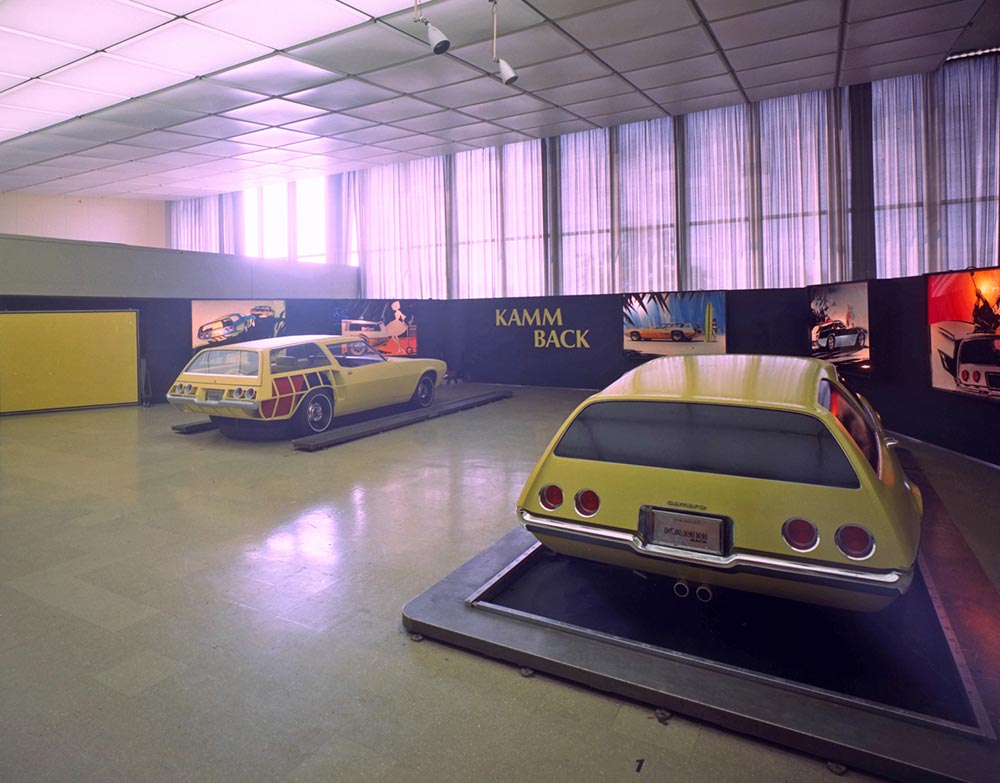
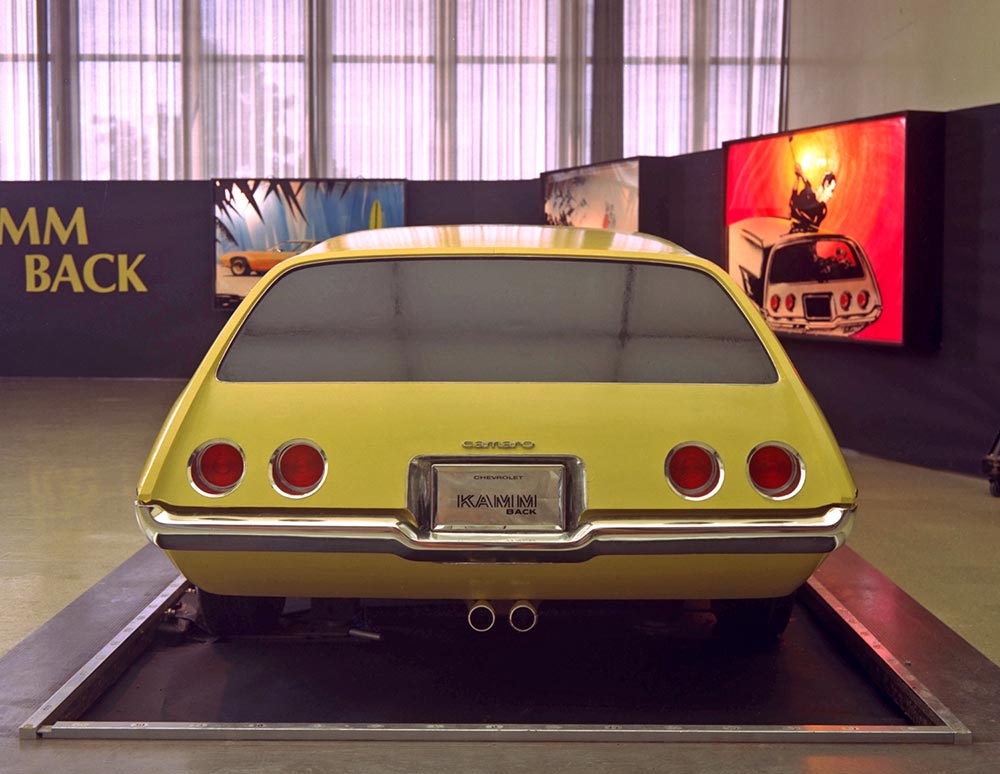
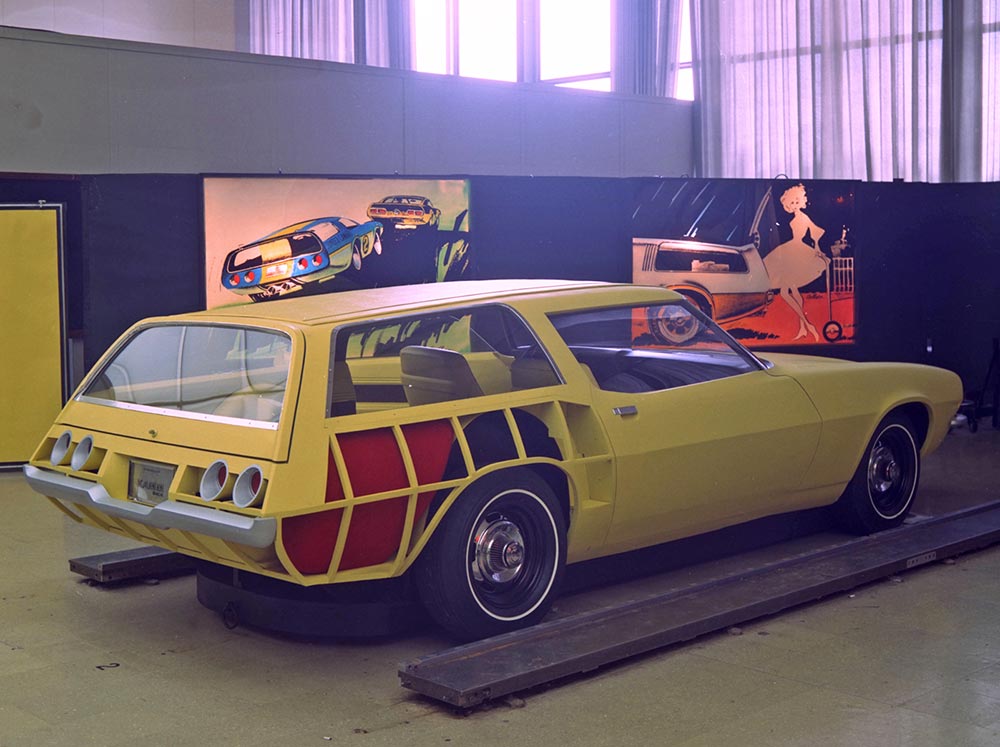
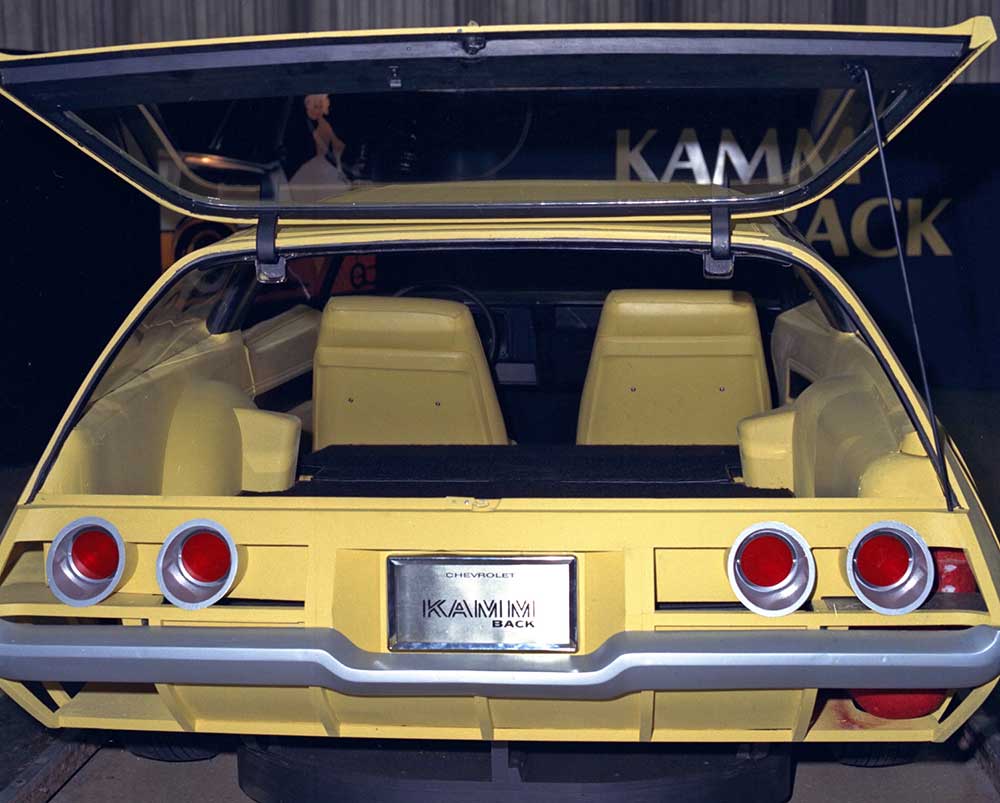
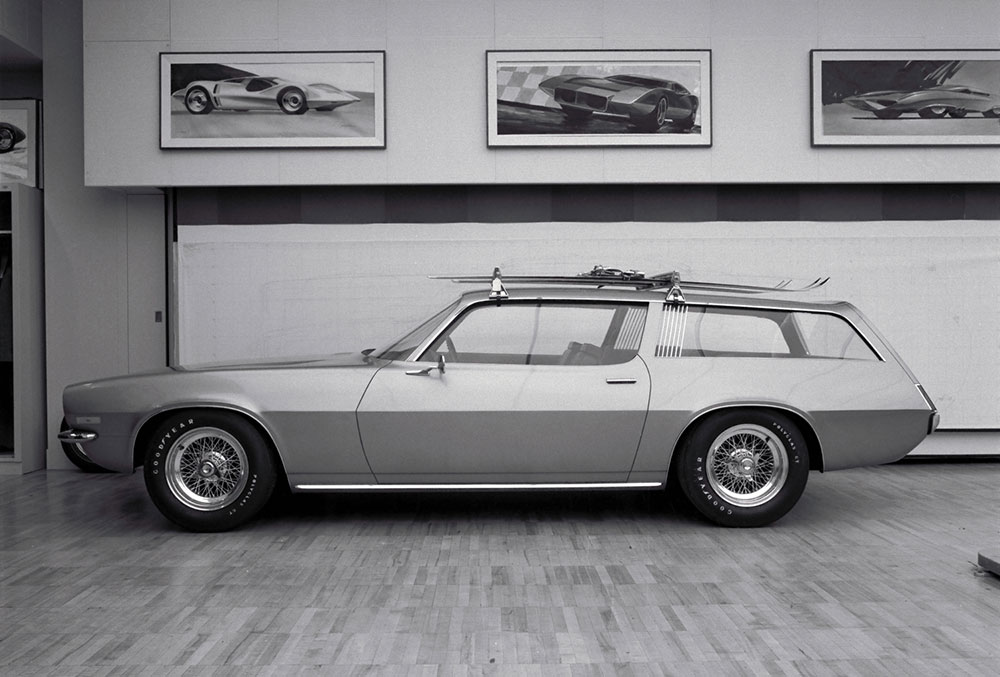
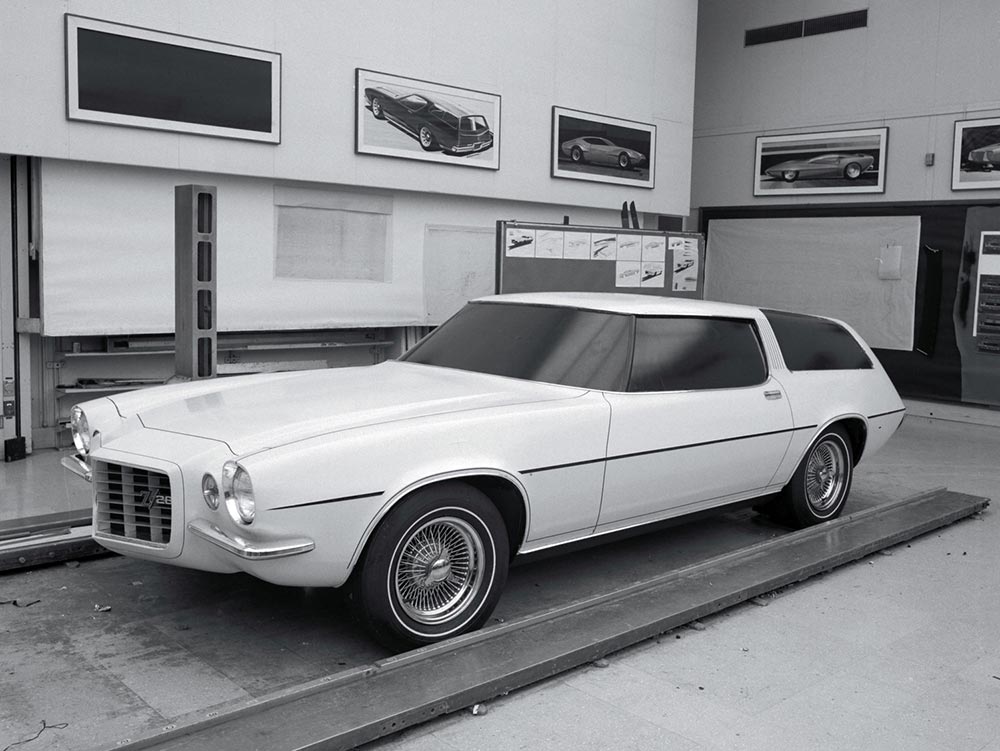
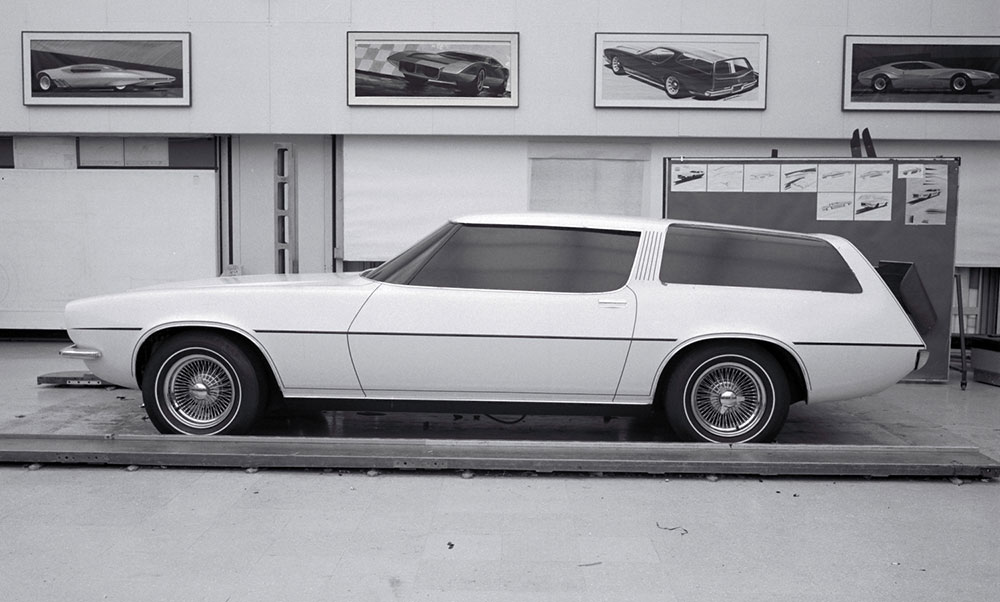
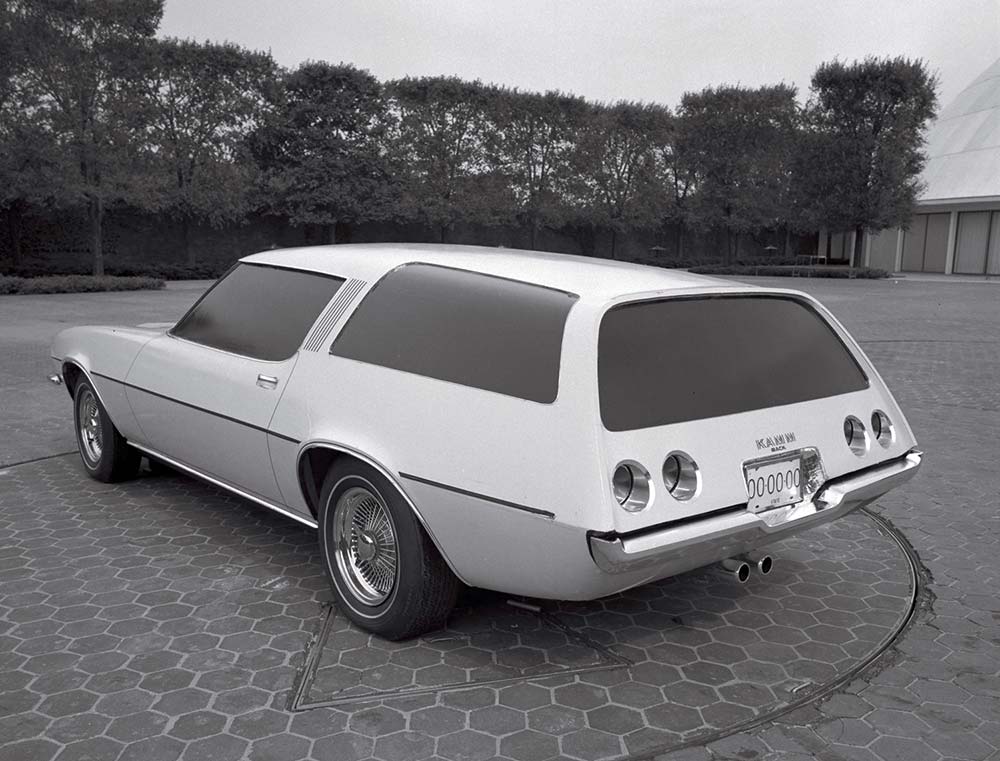
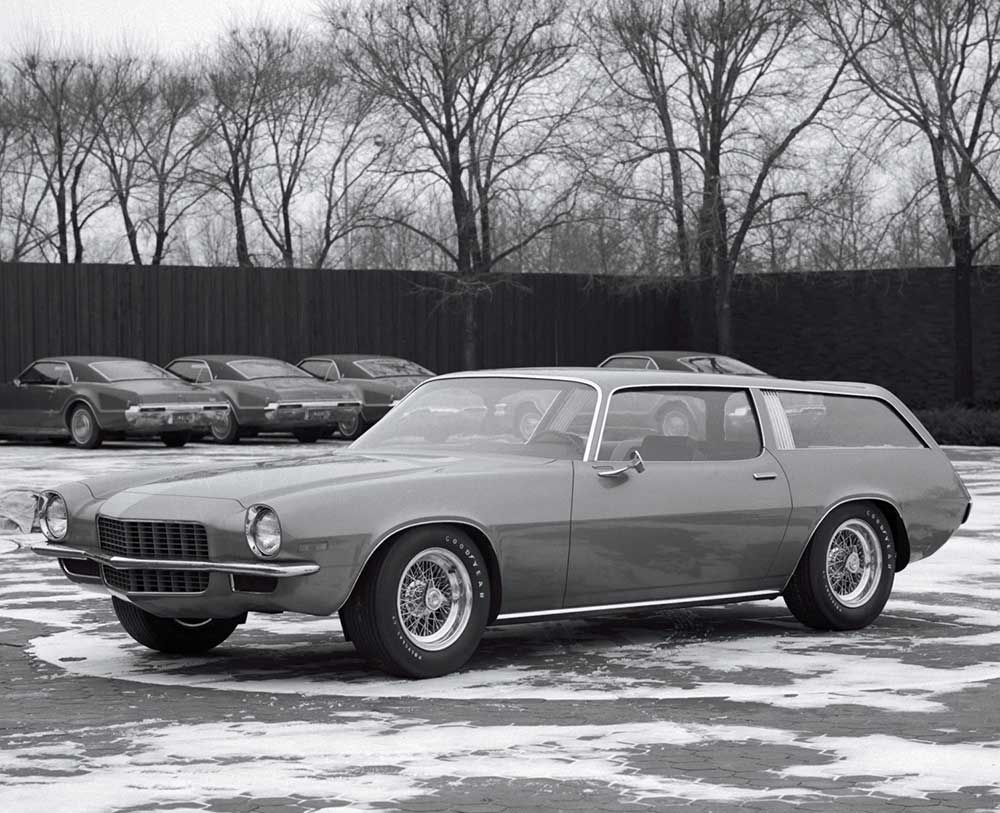
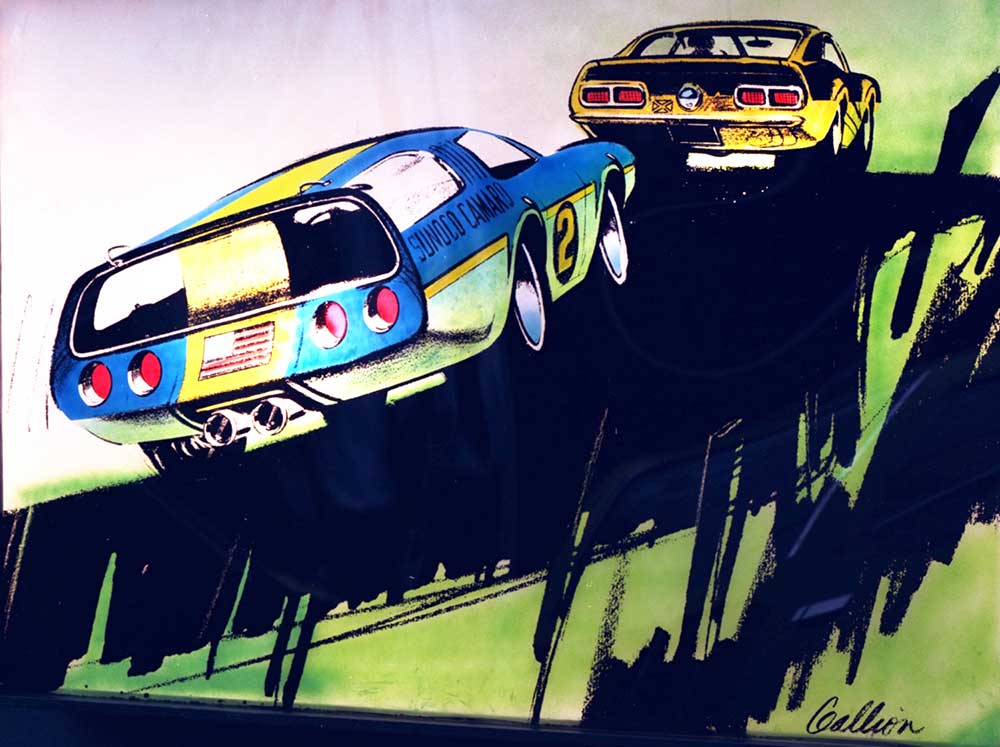
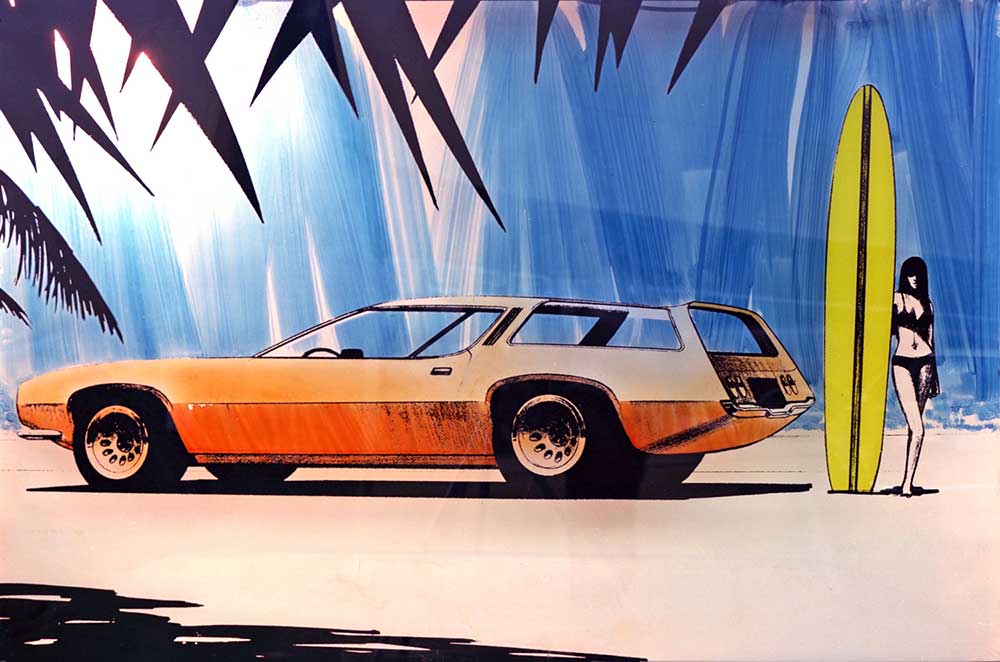
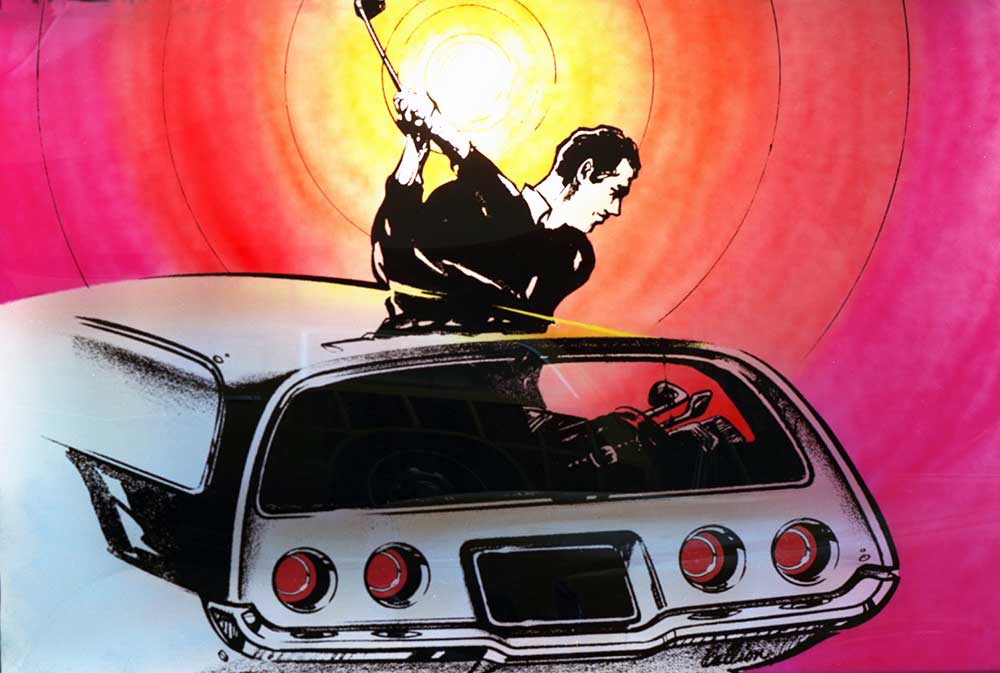
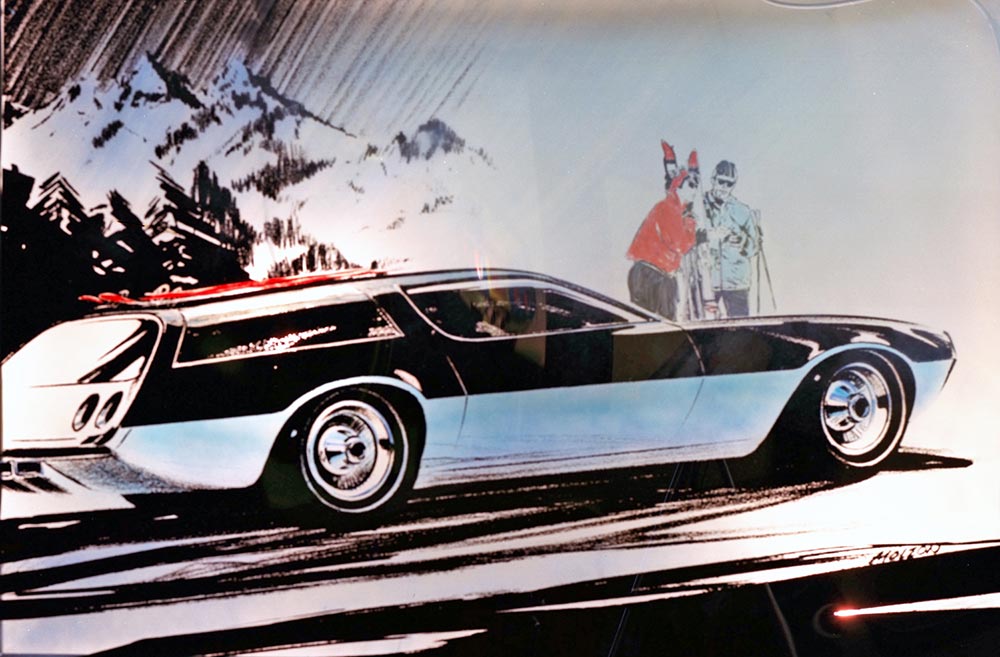
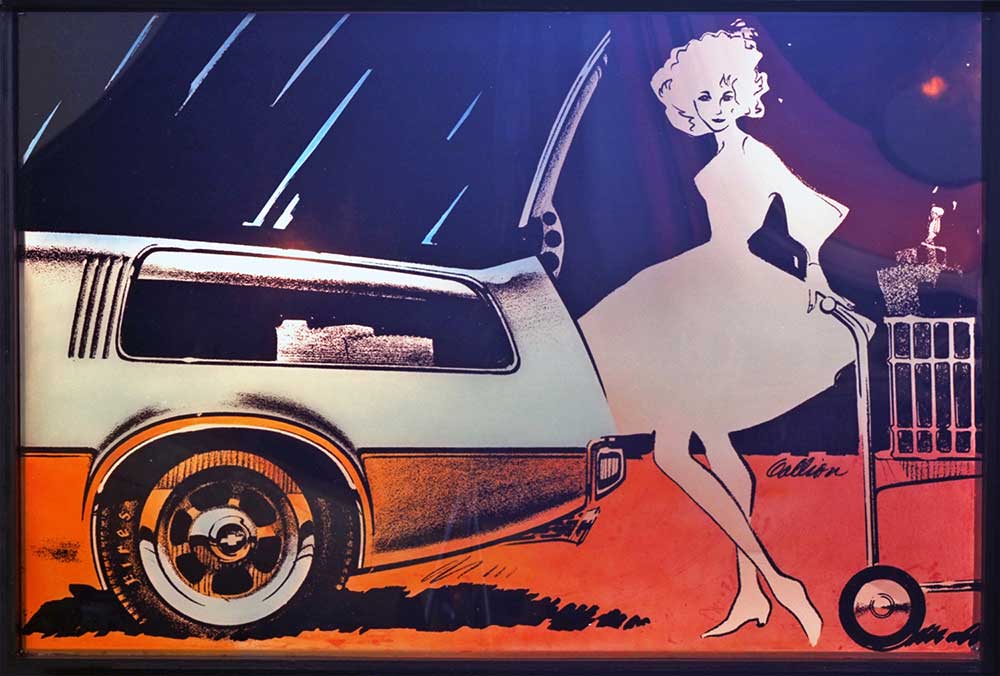
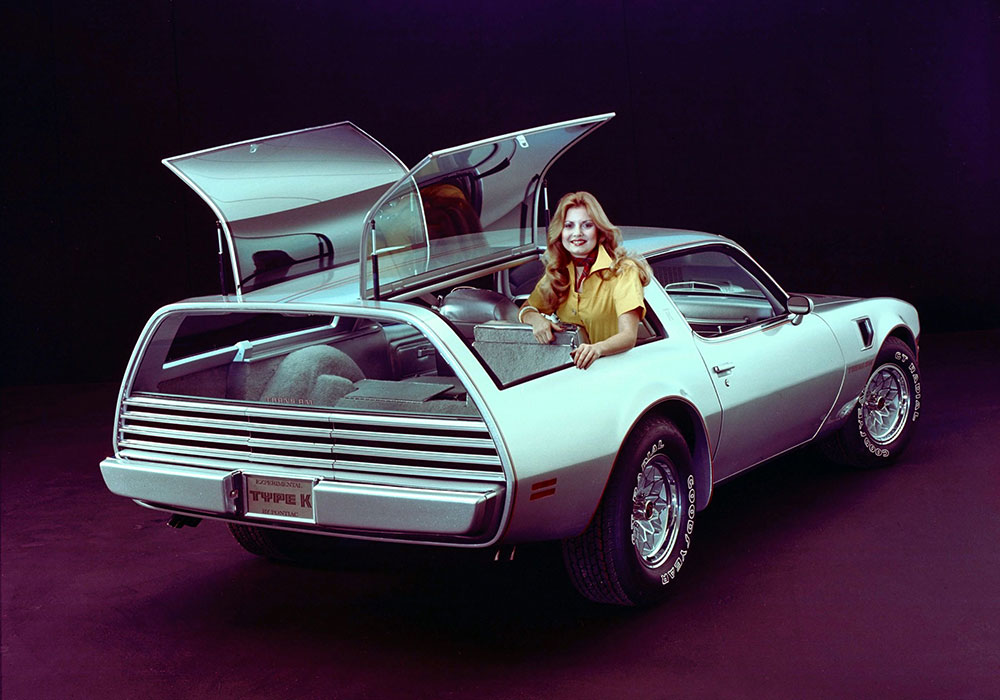
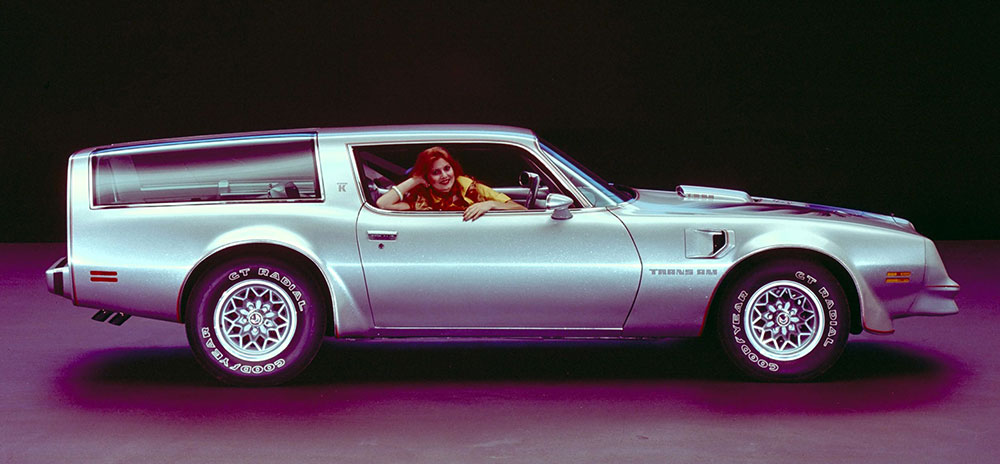
This design still looks good. Definitely a missed opportunity for GM.
I would really like to know the story regarding the fleet of 1969 Olds Toronado’s in the background?
What is a technical stylist?
Great story, love the photos of the sketches, renderings and models. Bob, I never knew you were the man behind the Kammback Camaro. That design was my inspiration for what became the Vega Kammback (XP887). Plus, it was great to see you and your lovely wife in Scottsdale last year.
Aerodynamic efficiency was never taken seriously enough at GM. There were a few design/engineers who understood the value of function over fashion but they simply didn’t have the political horsepower to make effective change. These lovely Kammback designs, shown here, had they been produced, would have had a tremendous influence in making all automotive manufacturers more conscious of the environmental concerns which eventually forced the Federal changes. Kamm and Koenig von Fachsenfeld were decades ahead of their time. Peter Brock
The Firebird KammBack wagon was seen in several scenes of The Rockford Files – the last year it was produced, I think.
I’ll have to check what show it was….
Danny
Kelly Sharpton
What is a technical stylist?
Kelly, a Tech Stylist used to be called a Blackboard Man – not a very nice “title”. So. the name was changed to Technical Stylist. He reports to the Studio Engineer and the Chief Designer. The Tech Stylist is a very important person in the design process as he and his team, of one or two others, provide the link between the Designer and the Sculpture, in other words, they make the Designer’s work realistic before it is modeled in three dimensions (and changed a lot!). (At least, that’s the way it was 30 years ago before I retired)
Ken Pickering
Great story Bob. Thanks for putting it all together. I remember seeing the model and seating buck, it was really stunning.
I’ve seen this many times over the years. I think it would have been a wonderful addition to the GM lineup, in any form. Too bad the project was stillborn. Thanks for another great story. When so many former designers, Peter Brock included chime in, you know you’re contributing at a high level. Keep up the good work.
Great article and no wonder the Kammback design was such a hit. Love seeing the drawings. Thanks!
I’ve read that a convertible was also explored for the 1970 F-body, and that it was well liked, but ran into similar obstacles in manufacturing costs versus volume. I’ve never seen the design published, and I’m always looking in the background of Chevy and Pontiac studio photos in case it’s up on the wall somewhere, but no luck so far.
I’d like to think the convertible was more than just sawing off the roof (the way the aftermarket later did it, with the remainder of the fastback profile leaving a Porsche 911 type of slant), and that instead the back deck might have sat at a lower angle, better integrated into the rear quarters. That might have looked a bit like of the Monza GT concept crossed with the production C3 convertible rear, over a more 1970 Camaro tail panel.
Do any images of a 1970 Camaro or Firebird convertible design survive? Does anybody know more of the history?
This is a wonderful car. I may have to cut one up and see if I can recreate it. Anyway to get more photos of the inside? Looks like the car from the doors forward are the same and from the rear quarter horizontal lines down are the same. Might not be to hard to build one if these?
The spirit of the Corvette Nomad lives on,which also had great aero!
That is not only a beautiful and timeless design but I specifically love the functioning back glass that makes for easy storage loading/unloading. Too bad this never took off to full production as I would be looking for one of these that’s been stored in the dry rust-less areas of California and Arizona!
Ack, your designs defy aging! Beautiful design then & now!phil Payne